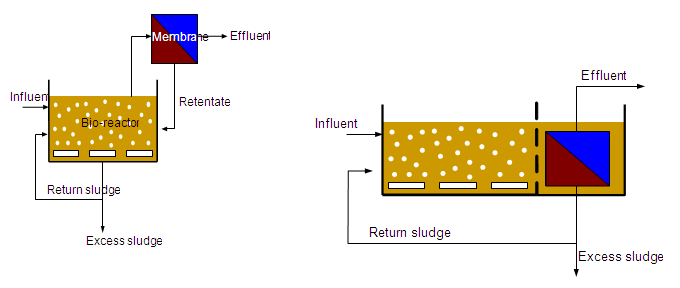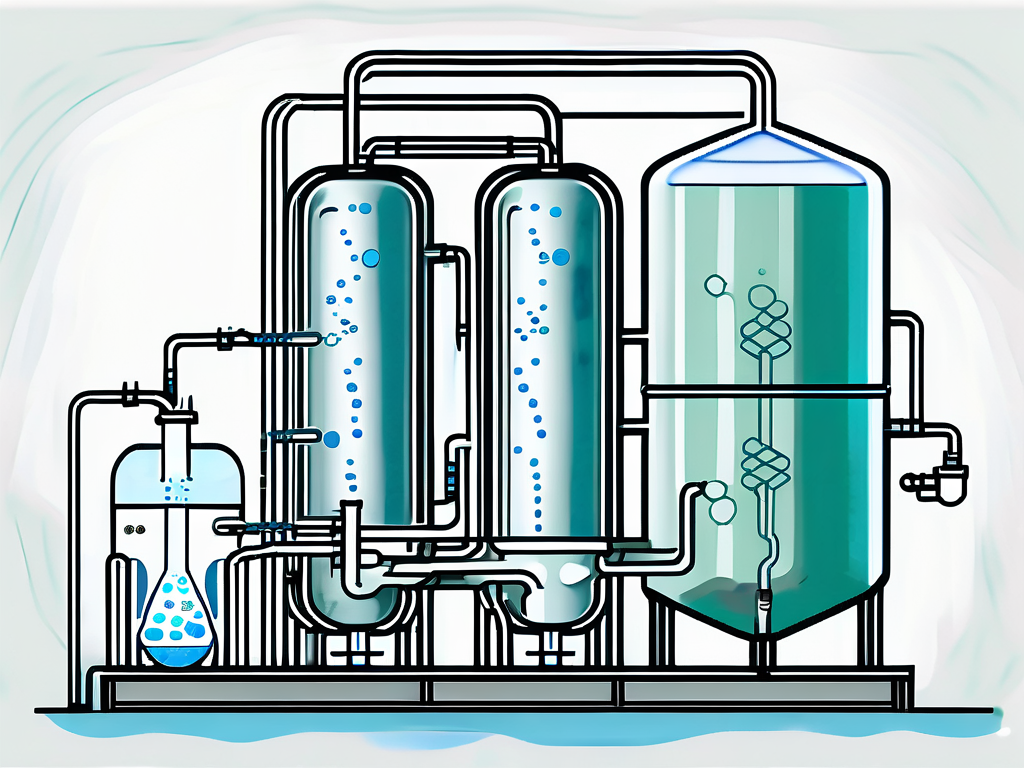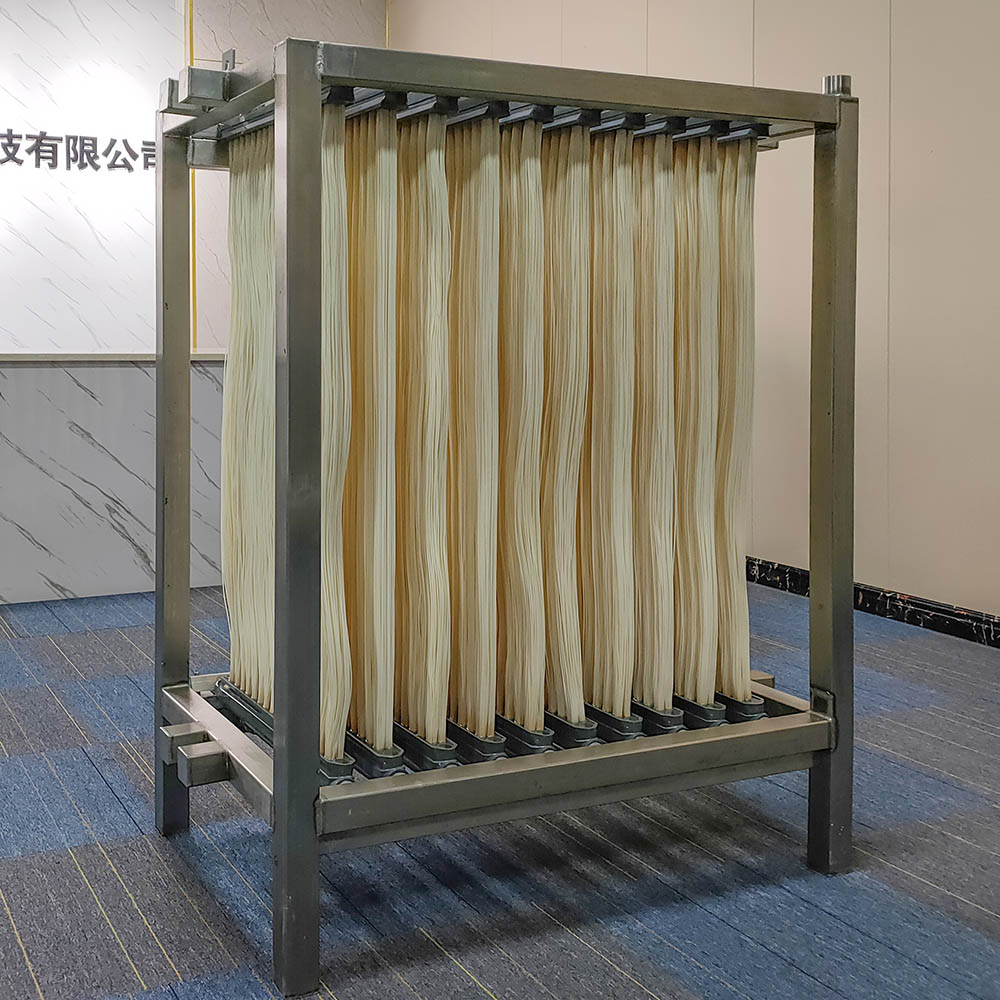Exactly How Membrane Bioreactors Are Transforming Water Filtration Solutions
The development of membrane bioreactors (MBRs) stands for a considerable innovation in the field of water purification, merging organic treatment procedures with cutting-edge membrane purification modern technologies. This combination not just improves the quality of dealt with effluent but additionally addresses metropolitan space restraints, making MBRs specifically appropriate for largely booming areas. As global water shortage increases, the role of MBRs in assisting in potable water reuse and lasting water monitoring comes to be progressively essential. The effects of this technology expand beyond effectiveness-- what possibilities and difficulties exist in advance for its extensive application?
Overview of Membrane Bioreactors
Membrane bioreactors (MBRs) represent a significant improvement in water filtration technology, as they incorporate biological treatment procedures with membrane purification. This integration enhances the performance of wastewater therapy by making use of bacteria to degrade organic pollutants while concurrently utilizing semi-permeable membrane layers to separate treated water from put on hold pathogens and solids.
The MBR system usually contains an organic activator where the microbial populace metabolizes impurities, adhered to by a membrane filtration unit that maintains biomass and enables only clean water to go through. This twin functionality causes greater effluent quality contrasted to conventional treatment techniques. MBRs can be operated in both set and continuous flow settings, supplying flexibility in design and application.
They also enable the recuperation of water for reuse, thus contributing to water sustainability initiatives. Generally, MBRs are at the center of enhancing water therapy efficiency and top quality, showcasing the potential for ingenious services in environmental administration.
Benefits of MBR Innovation
The combination of biological treatment with membrane layer filtering uses many benefits for water purification procedures. Among the main benefits of Membrane Bioreactor (MBR) technology is its capability to successfully get rid of both natural and not natural pollutants, resulting in high-quality effluent. The membrane layers act as a physical barrier, protecting against suspended solids and microorganisms from travelling through, which enhances the general safety and security and reliability of cured water.
Furthermore, MBR systems require a smaller sized footprint compared to traditional therapy techniques, enabling much more reliable space usage. This portable style is particularly advantageous in city settings where land is limited. MBRs additionally demonstrate operational versatility, accommodating differing influent high qualities and circulation rates without substantial efficiency degradation.
Moreover, the procedure supplies boosted nutrient removal abilities, particularly for nitrogen and phosphorus, which are critical for preventing eutrophication in receiving waters. The decreased sludge production related to MBR technology additionally translates to lower disposal expenses, making it an affordable remedy over time - Membrane Bioreactor. In general, the benefits of MBR modern technology placement it as a leading selection for ingenious and lasting water filtration systems, attending to both environmental and financial worries
Applications in Water Filtration
Applications of Membrane Layer Bioreactor (MBR) technology in water purification are impactful and diverse, addressing numerous therapy needs throughout numerous industries. MBRs properly integrate biological therapy procedures with membrane layer filtering, making them optimal for local wastewater treatment, industrial effluent management, and even potable water reuse initiatives.
In municipal settings, MBRs are increasingly used to enhance the quality of dealt with wastewater, enabling for conformity with rigorous discharge guidelines and assisting in the recycling of water for irrigation and non-potable uses. Their portable design also makes them suitable for metropolitan settings where area is limited.
Industrially, MBR modern technology is made use of to treat procedure water and wastewater, especially in industries such as food and beverage, pharmaceuticals, and fabrics. By successfully eliminating impurities and suspended solids, MBRs aid informative post industries minimize ecological impacts while recuperating important resources from wastewater streams.
Moreover, MBRs are getting traction in decentralized water therapy applications, where small systems can be released in remote areas or creating regions. This versatility makes it possible for areas to attain sustainable water administration remedies, improving accessibility to clean water while decreasing dependence on traditional therapy methods.
Study and Success Stories

In an additional example, a fabric manufacturing facility in Bangladesh took on MBR technology to address its wastewater difficulties. The system decreased chemical oxygen need (COD) degrees from 1,200 mg/L to much less than 100 mg/L, thus meeting governing criteria and substantially reducing environmental impact.
The University of Cape Community's MBR setup has actually confirmed efficient in treating greywater for non-potable reuse on school. This job not just saves safe and visit here clean water however likewise acts as an instructional design for lasting methods.
Moreover, a fish and shellfish handling plant in Norway utilized MBR innovation to deal with effluents having high levels of raw material, attaining over 90% pollutant removal. These instance researches emphasize MBR technology's flexibility and its essential role in improving water top quality throughout diverse applications.
Future of Water Treatment Solutions
As worldwide water deficiency and air pollution obstacles intensify, cutting-edge water therapy services are ending up being progressively important to make sure lasting accessibility to tidy water. The future of water therapy hinges on the integration of sophisticated innovations that enhance the performance and efficiency of filtration procedures. Membrane bioreactors (MBRs) are at the forefront of this evolution, combining organic therapy with membrane layer purification to create high-grade effluent appropriate for different applications.

Emerging fads such as source recuperation from wastewater, consisting of nutrients and energy, will certainly additionally transform therapy centers into environmentally friendly centers. Developments in nanotechnology and membrane materials promise enhanced efficiency and longevity of purification systems.

Verdict
Their role in potable water reuse and lasting water administration highlights their importance in dealing with worldwide water shortage obstacles. Proceeded study and development will better improve the efficiency and adoption of MBR modern technology, making certain a durable future for water treatment options.
The appearance of membrane layer bioreactors (MBRs) stands for a considerable improvement in the field of water purification, combining organic therapy processes with innovative membrane layer purification modern technologies. As international water deficiency intensifies, the function of MBRs in assisting in safe and clean water reuse and sustainable water management comes to be increasingly essential. They also make it possible for the healing of water for reuse, hence contributing to water sustainability campaigns.As worldwide water shortage and air pollution obstacles magnify, cutting-edge water therapy solutions are ending up being significantly crucial to guarantee lasting access to clean water. Their function in drinkable water reuse and lasting water management highlights their importance in attending to international water scarcity difficulties.